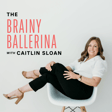
64. Rewiring Ballet: Tim Lynch’s Somatic Perspective on Dance Education
In this insightful episode, I’m joined by Tim Lynch to trace his remarkable journey from a hyperactive kid looking for an outlet for his energy to a career dancing at Pacific Northwest Ballet and beyond.
He reflects on his 10-year career at PNB, the value of corps de ballet work, and highlights like dancing A Midsummer Night's Dream, and Agon at the Kennedy Center.
We also explore Tim’s transition into education and how he built a thriving boys' program at PNB. Tim shares the philosophies that shape his teaching style, including his emphasis on somatic practices, individualized instruction, and lifelong learning.
Key “Pointes” in this Episode
🩰How Tim stumbled into ballet when his mom found an all boys class
🩰Tim’s time at SAB (including the story of how he landed the role of Prince with NYCB without even knowing what The Nutcracker was)
🩰Dancing at PNB, major roles, and memorable moments on international tours
🩰Tim’s educational philosophy: SAB discipline meets somatic wisdom
🩰The importance of building supportive, affirming environments for boys in ballet
🩰Tim’s commitment to lifelong learning: pursuing an MFA and staying active in professional development
🩰Advice for dance educators to make the classroom as more inclusive atmosphere
Connect with Tim:
WEBSITE: https://www.lynchdance.com/
INSTAGRAM: instagram.com/tim.j.lynch
Links and Resources:
✨APPLY to The Core Corps: thebrainyballerina.com/thecorecorps
Get 20% off your first order of ALOHA protein bars: https://aloha.com/BRAINYBALLERINA
1-1 Career Mentoring: book your complimentary career call
Let’s connect!
My WEBSITE: thebrainyballerina.com
INSTAGRAM: instagram.com/thebrainyballerina
Questions/comments? Email me at caitlin@thebrainyballerina.com


